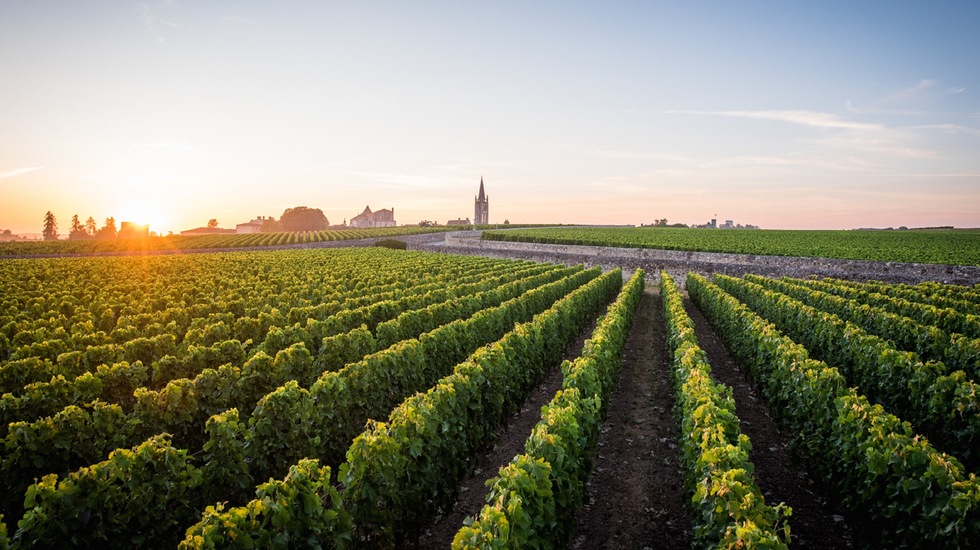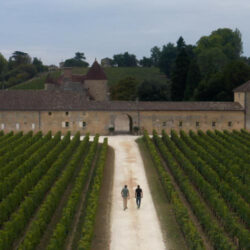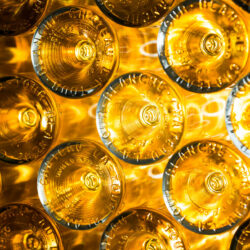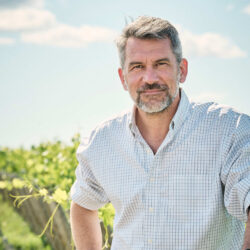The wines of Bordeaux secured their place at the top of the wine history archives long ago. Discover how the Union des Grands Crus de Bordeaux preserves that legacy.
The Union des Grands Crus de Bordeaux (UGCB) formed in 1973 with a couple of friends who got together to promote the Bordeaux wine region’s top estates. Today it’s comprised of 131 châteaux in 14 appellations, each of whom are voted into the group based on quality, reputation and their capacity to continue investing in order to represent the best of Bordeaux.
Collectively the members of the UGCB organise and host tastings, educational events and talks around the world to ensure professionals and consumers in all corners of the globe can experience and learn about the wines of Bordeaux. The priority is to share knowledge about the terroirs, the history, the many different appellations and, of course, winemaking of grands crus Bordeaux.
One such initiative from the UGCB was a special ‘atelier’ that welcomed some of London’s top sommeliers to put their skills and knowledge to the test. Focusing on and tasting a selection of wines from key appellations, the workshop commenced with white wines of Bordeaux and progressed to the red wines of the left and right banks, concluding with the sweet wines from the region.
The main grape varieties of Bordeaux
Throughout the Bordeaux grands crus appellations three red grape varieties dominate production: Merlot, Cabernet Sauvignon, Cabernet Franc, along with smaller quantities of Malbec, Petit Verdot and Carménère. These famous native grape varieties have travelled and are now also planted around the world.
The three main white grape varieties are Sémillon, the king of Sauternes that brings a lot of structure, Sauvignon Blanc, a compliment to Sémillon with citrus characteristics, and Muscatel, which is quite rare because it is susceptible to disease. All these grape varieties are the foundation of Bordeaux’s reputation.
What is a Grand Cru?
Bordeaux is a huge region, 127,000ha, and just 5% of it represents the Grands Crus. Fundamentally being a Grand Cru, it is about terroir. But what exactly is terroir?
Anne-Francoise Quié, Co-manager, Château Rauzan-Gassies & Croizet-Bages explains: “One notion that is very important to me, if we’re speaking about terroir, are the words of Denis Dubourdieu, the famous oenologist who said that terroir is a combination of soil and climates but also human work, over centuries. That you cannot change the nature of the terroir. But if you take your time, little by little, over centuries you evolve aspects of the terroir. Learning from each vintage at every stage of the growing season, noting the date of flowering, measuring the millimetres of water in the vineyard… we still use this information from our predecessors to compare and have references from previous years to understand it better for the next year. This history is a fundamental part of what is a Grand Cru.
In 1970s Bordeaux around 60% of production was red wine. Today that has increased to 90%. This rise in red wine production was fuelled by international demand that grew as the reputation of quality increased. This, coupled with the improved stability of the wines to travel the world, really established Bordeaux’s reputation.
The white production that remains in Bordeaux today is of the highest quality and really reflects the terroir of appellations like Pessac-Léognan, Sauternes and Barsac. These regions are famed for their clay and limestone soils which lend themselves to white wine production. And so, to respect the terroir and long-established knowledge and reputation for white wine production it is unlikely white production would overtake this area. Despite more white wine being produced in Bordeaux than red wine throughout the 19th and 18th centuries.
Aline Baly Director of Marketing and Communication at Château Coutet explains: “My winemaker loves Merlot, he is always pushing me and asking ‘can’t we plant a little bit of Merlot? Because we have excellent clay at Château Coutet.’ But I feel that in a property not only do we have terroir, but we have also accumulated years and years of experience, that we have passed on over multiple generations. If we were to switch, we would have to take a step back and take time to learn. We have evolved in one direction where we have become experts, and it would take a lot of energy to change gear. But who knows, we can’t predict the future!”
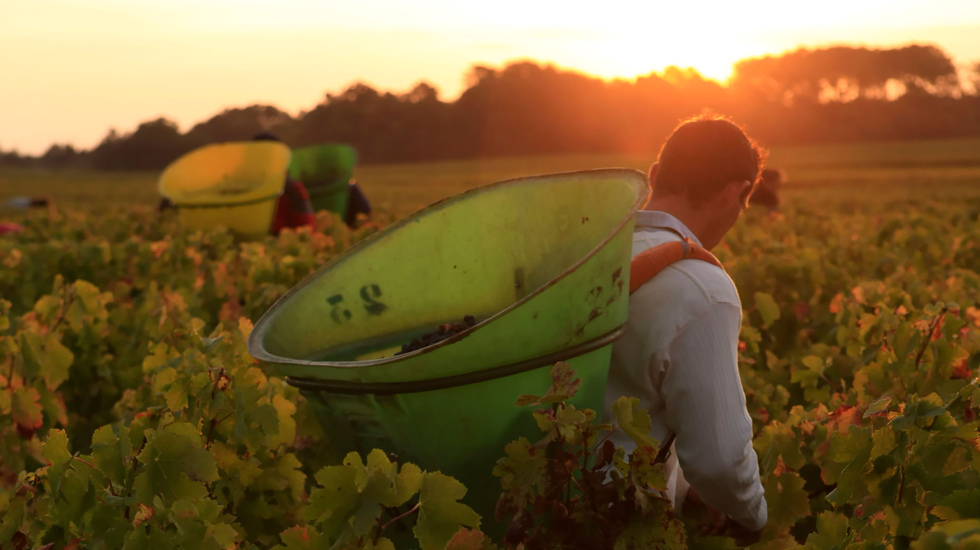
The importance of vintage
The notion of vintage is truly important in Bordeaux. It is when a grape variety can express itself, at its best, when it is at the limit of wine growing possibilities. Why? Because we don’t want to grow leaves or have a beautiful plant, we want to have a healthy plant, to focus on having a good grape for the wine, with little berries, perfumed, concentrated. We are growing plants in extremes conditions, such as density, which puts intense pressure on the grapes when growing, creating competition for sun and rain… This direct impact on grapes is different every year and this is the vintage effect. The Grands Crus are always pushing the limits to do the best, as much as, this is why there is a vintage effect in Bordeaux. A château must prove itself, that across the vintages it can produce the best it can, to consistently produce excellence.”
White wine appellations
Graves and Pessac-Léognan are the two premium appellations for still dry white wine production in Bordeaux. For around five centuries Graves, to the south of Bordeaux, has been the original/historical production area for white wines. Whereas Pessac-Léognan, closer to the city of Bordeaux and located around the two cities of Pessac and Léognan, is a more recent appellation created in 1987.
Graves: 4,650 hectares | Pessac-Léognan: 1,800 hectares
The oldest wine growing terroir in the region
Soil: gravel, smooth pebbles, sand and clay
Whites: fresh fruit and complex
Typically, wines from Graves have more of that freshness and minerality, from the limestone and gravel components. Pessac-Léognan produces wines with great ageing capacity that are aromatically complex.
2019
CHÂTEAU BOUSCAUT
PESSAC-LEOGNAN
50% Sémillon – 50% Sauvignon Blanc

2019
CHÂTEAU DE CHANTEGRIVE
GRAVES
50% Sémillon – 45% Sauvignon Blanc – 5% Sauvignon Gris

Jean-Antoine Nony, owner of Château Grand Mayne says of the wines presented: “These two wines are both very fresh and the aromas are pronounced – this is very distinctive from Graves and Pessac-Léognan. As producers we are very attached to the origin of the wines, the story of the place and to show where they are coming from. We want to respect and show what is the terroir of the region. I think these two wines that are clean – without fault, fresh and so vibrant, are a great expression of what the wines from the two regions should be.
Quié notes: “These two wines have four years of age, so very young, and when you taste them, you have lots of fruit. When you look at the colour it gives you an idea of the ageing potential of the wines, you could keep them for longer. Now, to enjoy these wines with food, you would have to include some lemon, something very fresh and complimentary to the minimality. But in time you will find more richness, fullness and we can see the influence of ageing in barrel.”
What to expect from white wines of Bordeaux?
First, expect freshness and fruit. Sauvignon Blanc brings acidity, which for an oenologist means freshness. Sauvignon Gris adds a touch of smokiness to the final blend.
Carolina Seibel, assistant head sommelier at Petrus restaurant in London says she finds her customers have differing sets of expectations: “Sometimes you have people who want a long-aged white wine from Bordeaux, so they don’t expect the freshness, but they obviously like the development of the white Bordeaux. Then the people that like Sauvignon Blanc, really enjoy the freshness, the grassy side of Sauvignon Blanc.”
With white wines that display oaky influence from ageing in barrels, first you get freshness, bright fruits, and perfumed aromas but the colour is not impacted by oak ageing. This reflects the precision winemaking techniques that indicate the ageing potential of these wines. These wines are terrific with oysters.
Quié concludes: “There are many ways to express oak in wines, it could be the aroma of oak or with also soft oxygenation to reduce aroma. What is interesting is that you bring complexity with the ageing and this complexity doesn’t always mean the nose of oak. Ageing in barrels and battonage and other processes change little by little the composition of the wine. Battonage is important to us for bringing complexity to the wines from the lees. The soft oxygenation changes different molecule of polyphenols in the wines that will no longer react on your tongue in the same way as when the wine was young. So, an oaky wine, a wine aged in barrel, doesn’t mean for us in France, an oaky taste in the wine – it’s complexity.”

